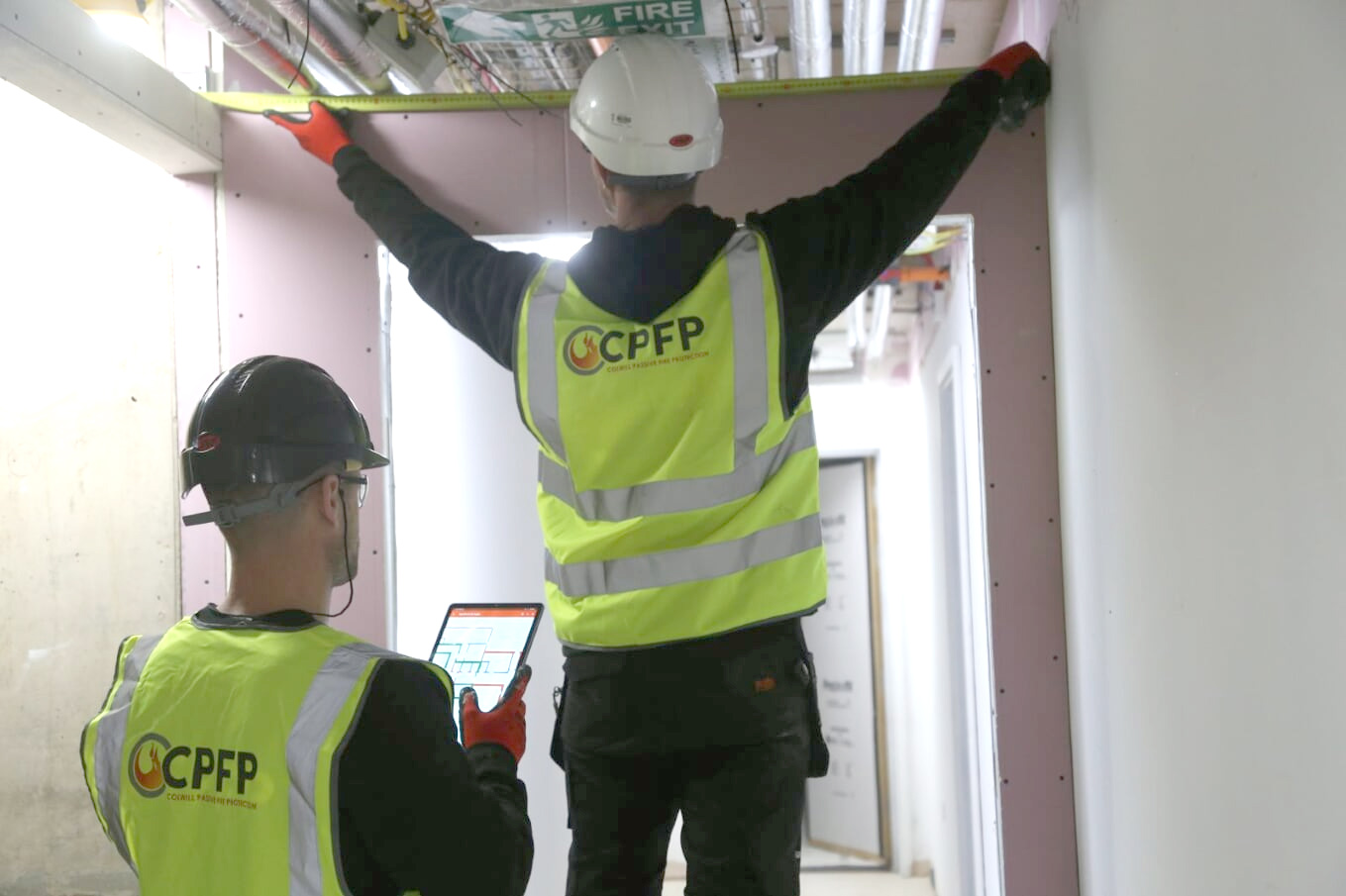Fire Doors Explained – An Overview of Fire Doors
What is a Fire Door?
A fire door is a specialist type of door that is designed to withstand a fire for as long as possible. They are crucial when it comes to a building’s passive fire protection strategy as they enable buildings to compartmentalise and delay the spread of fire from one room to another.
What are Fire Doors Made Of?
From metal – like aluminium and steel – to timber, gypsum and glass, a wide range of materials can be used to create fire doors. Exactly what is used to create the door will depend on its application, but in most cases, a combination of these materials is used.
To enhance their fire-stopping abilities, fire doors are fitted flush with the frame. Any gaps are filled with a fire-resistant sealant and an intumescent strip is attached to the base of the door (which expands when exposed to heat) to prevent smoke from seeping underneath. A spring-loaded or hydraulic closing mechanism is also usually fitted too to force the door closed and prevent smoke from passing through.
Some fire doors even have windows. These windows are usually made from either borosilicate or ceramic glass (both of which offer higher fire resistance compared to standard glass) and can contain anti-shattering wire mesh.
It is important to note that a fire door can only be classified as a ‘fire door’ once it has been certified by a manufacturer. Fire door certification is only awarded once a door has passed various tests at an approved centre – approved doors will have a label stating their manufacturer, date of manufacture and designated fire rating – so even if your door contains some or all of the aforementioned features, it may not necessarily be a fire door.

When are Fire Doors Required?
A two-storey house which has a door leading from an internal garage into the house requires a fire door. New build and renovated homes with three or more storeys (including loft conversions) must also have fire doors to every habitable room off the stairwell.
For commercial and non-domestic buildings, fire door requirements vary according to whether the escape routes are vertical or horizontal, i.e. downstairs or through corridors.
Fire doors are available in a wide variety of standard and non-standard sizes, meaning protection can be added to all types of buildings.
Importance of Professional Fire Door Installation
Fire doors should always be fitted correctly by a competent and professional installer. Each fire door will have test evidence that specifies the type and density of door frame and the correct intumescent strips that should be used.
Fitting the correct ironmongery (such as hinges, handles and locks) is also important as it forms part of the fire door’s test accreditation.
Failure to follow these recommendations will inevitably restrict the performance of your fire door, so it’s crucial that you use an accredited company for the installation.

How Long Does a Fire Door Protect You For?
The duration of time that a fire door can withstand flames and smoke varies and depends on the door’s manufacturer and specification. Different grades of fire doors are available, with each grade providing a different level of protection – the primary differentiator in the grades is the door’s thickness.
The main fire door grades are:
- FD30 (designed to withstand fire for 30 minutes)
- FD60 (designed to withstand fire for 60 minutes)
- FD90 (designed to withstand fire for 90 minutes)
- FD120 (designed to withstand fire for 120 minutes)
- FD240 (designed to withstand fire for 240 minutes)
FD30 fire doors are the most common type of domestic fire doors. The higher graded doors tend to be used to protect high-value properties or core infrastructures, like server centres, for example.
Fire Door Maintenance
In order to ensure your fire door(s) continue to function properly, it is vital that you regularly check its condition. Even just a slight alteration to the door or its surroundings can impact its performance and its ability to withstand flames and smoke. Any issues identified should be fixed as soon as possible using suitable fire components.
Also, as fire doors are used just like any other door, they are subject to everyday wear and tear. You should clean your fire doors in the same way as you would for a regular door and re-varnish as and when required.
Passive Fire Protection with CPFP
Here at CPFP we specialise in providing the highest levels of passive fire protection. We help buildings of all types and sizes prevent the transfer of fire, smoke and heat through walls, floors and ceilings.
From cavity barriers to penetration sealing and fire compounding, we provide a comprehensive range of services to help you ensure your building meets current fireproofing regulations.
To learn more about fire doors or to find out more information about any of our industry-leading passive fire protection services, please don’t hesitate to get in touch with a member of our team today.
See more: Everything You Need to Know About Passive Fire Protection
Speak to Us Today.
Address: The Old Angel, Flax Bourton, Bristol, BS48 3QQ
Phone: 0117 450 9943
Email: info@cpfp.co.uk
